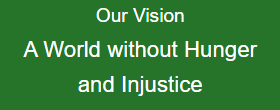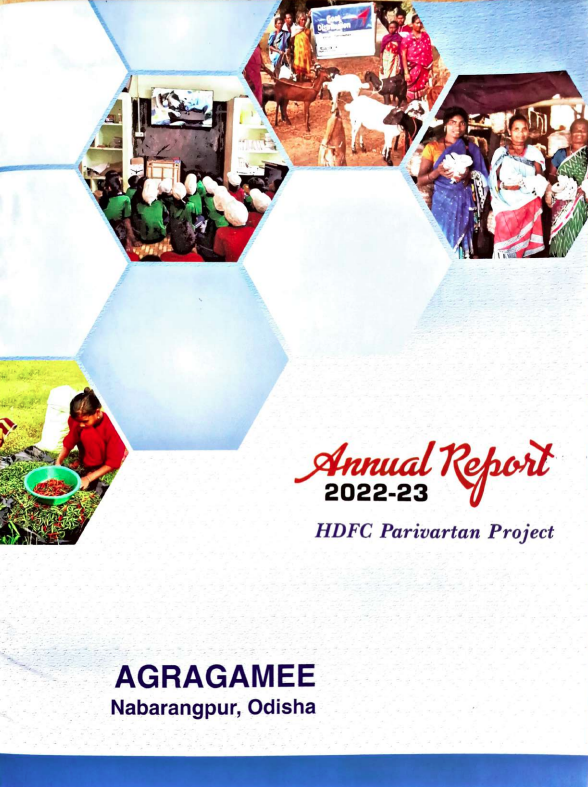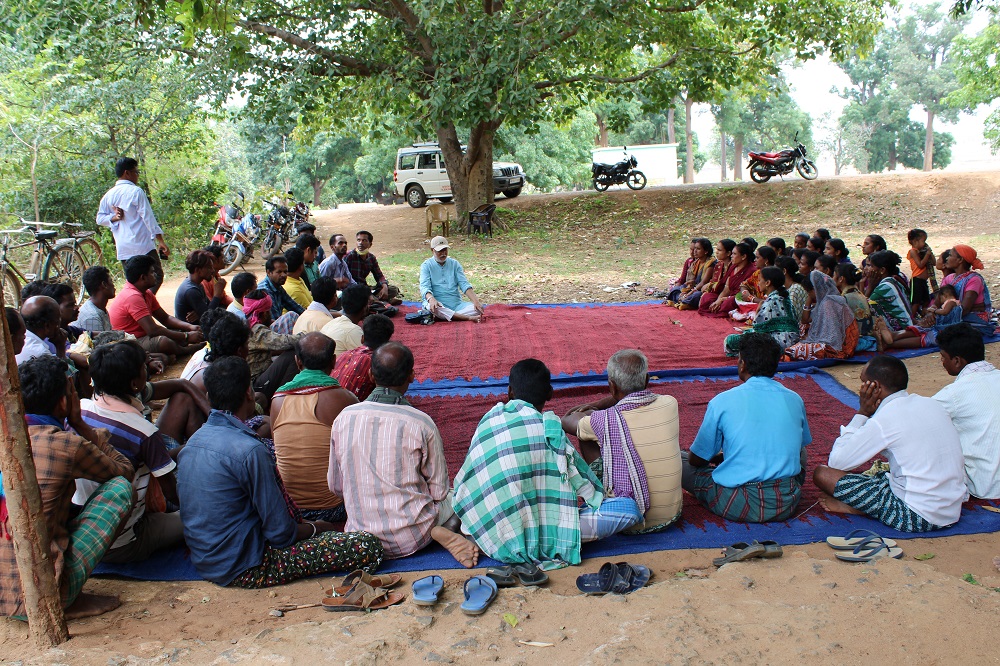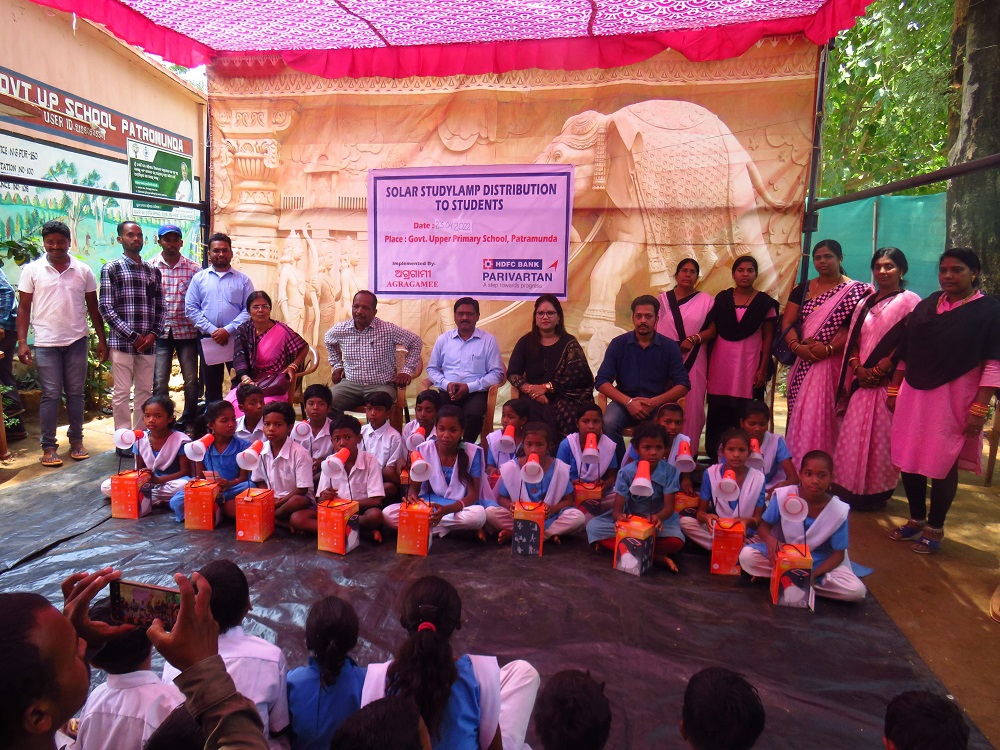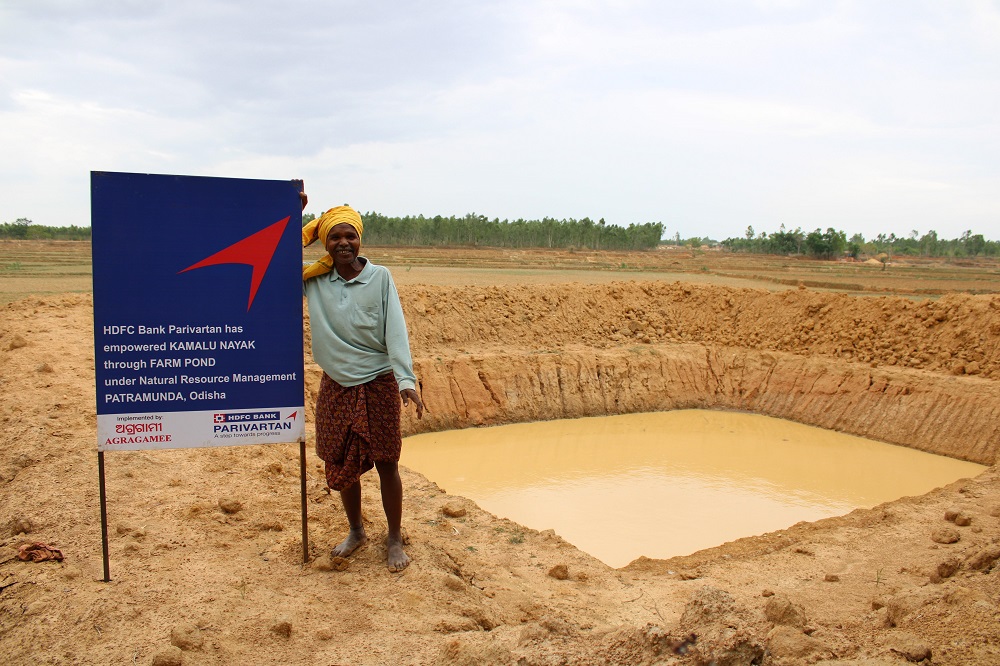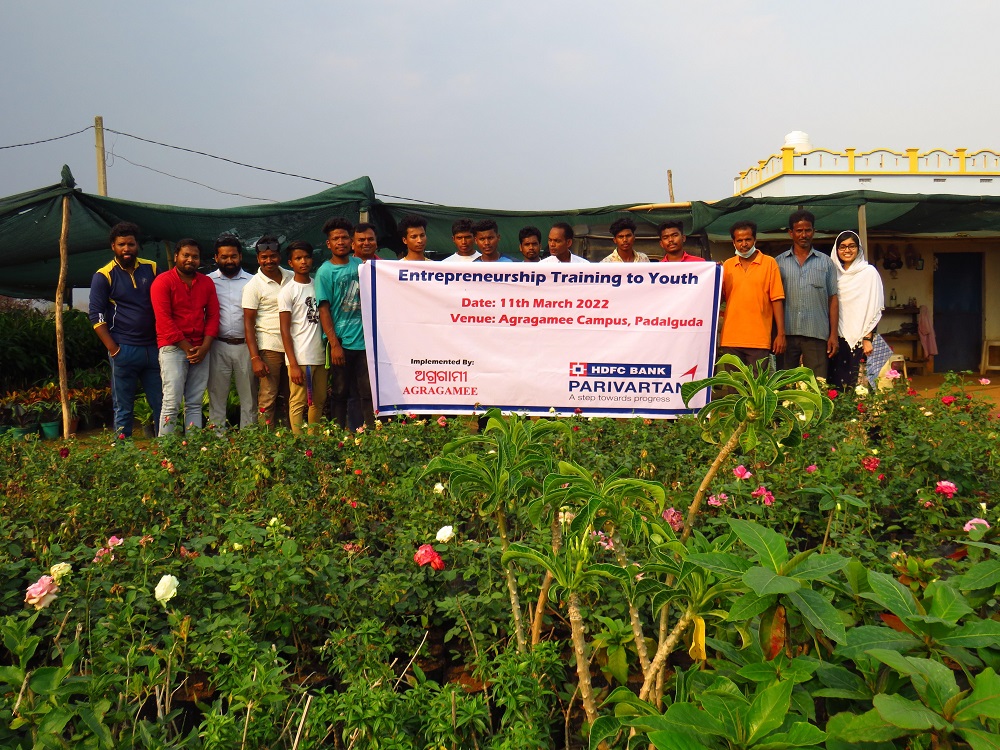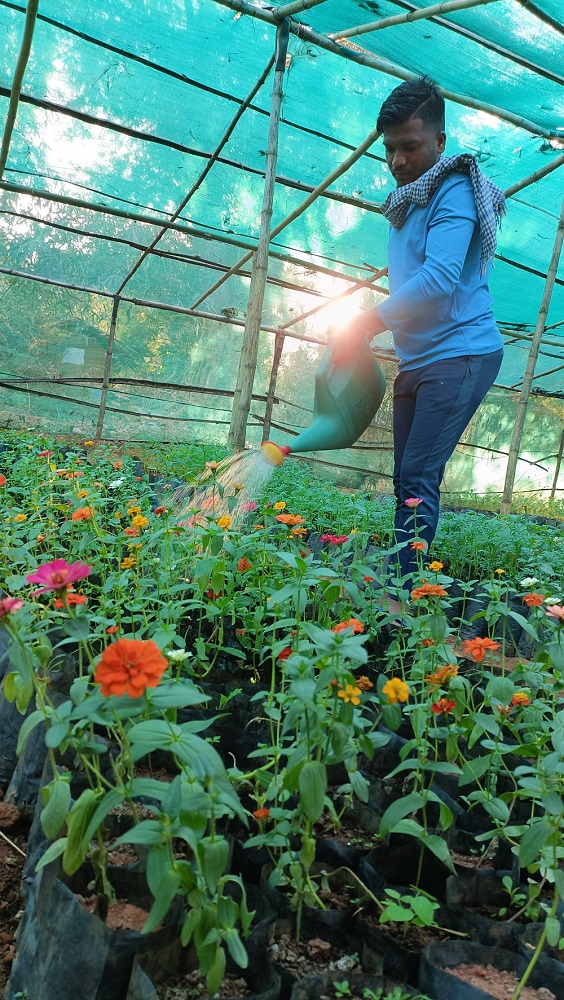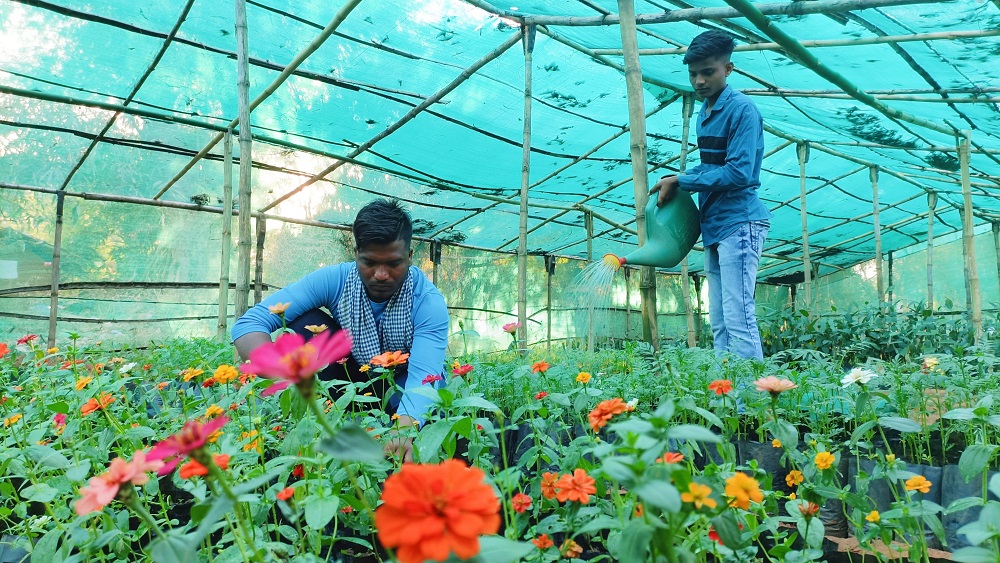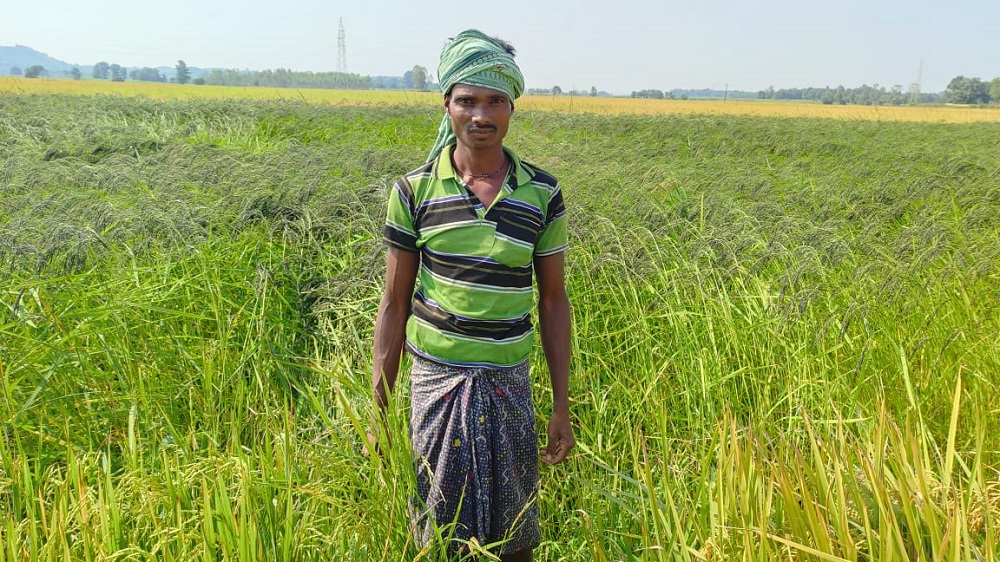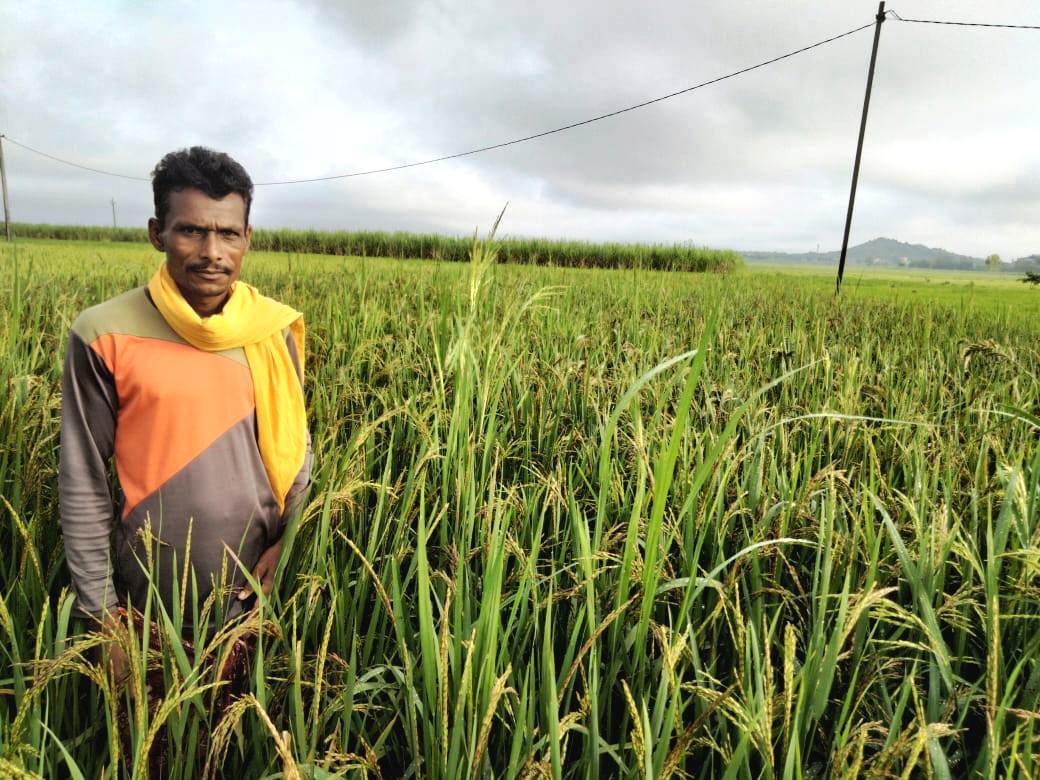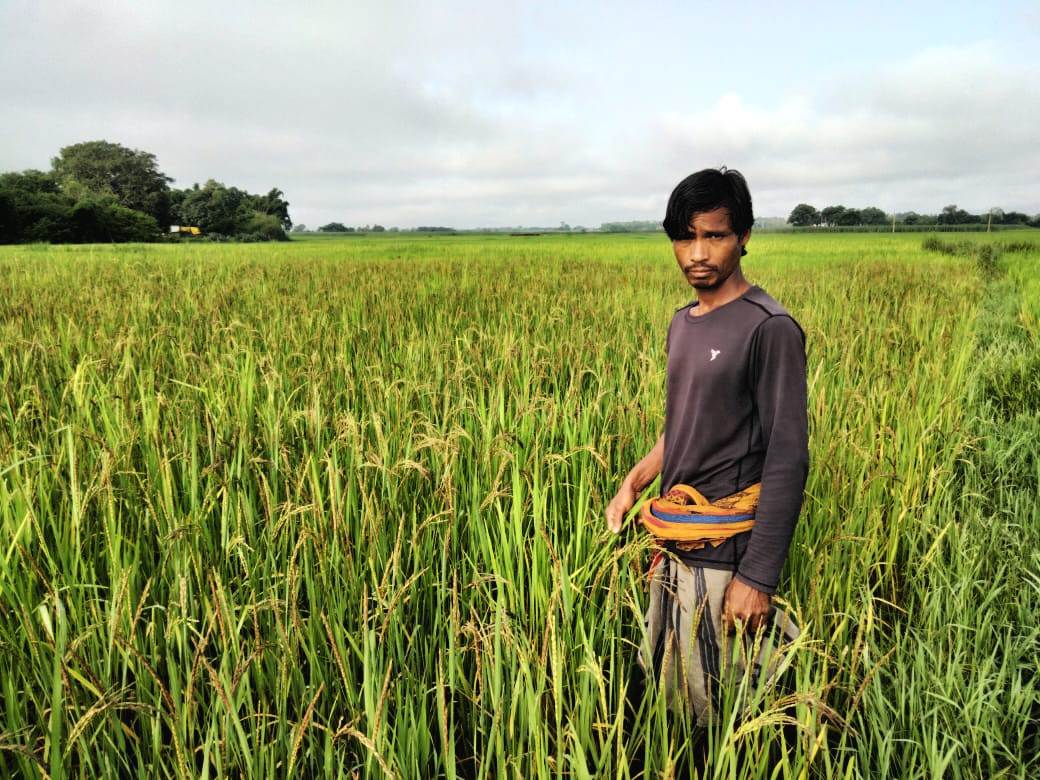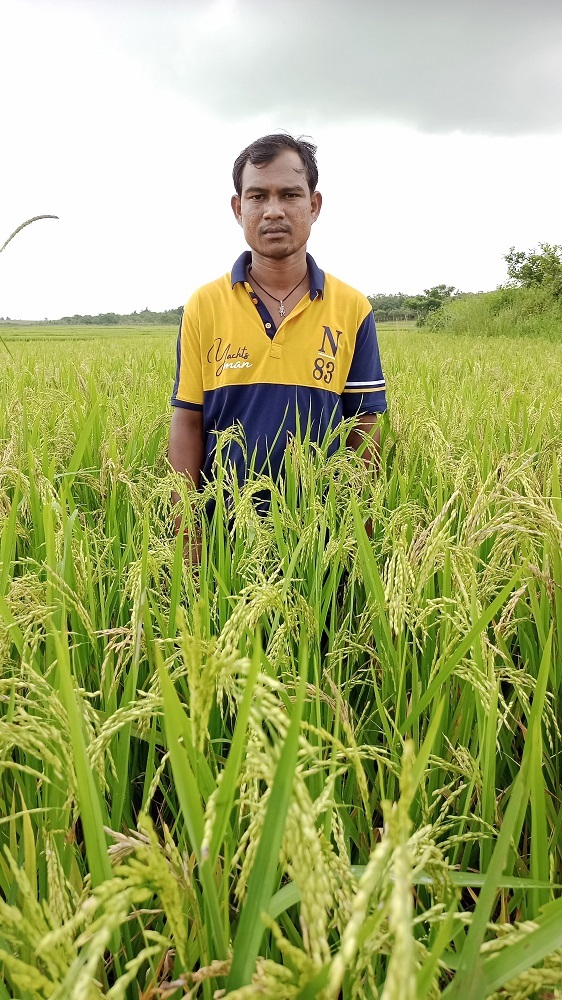CSR ACTIVITIES : HDFC-HRDP PROJECT
ABOUT THE PROJECT :
Title of the Project : Natural and Agroecological Based Agriculture with Development Initiatives under Sustainable and Holistic Action (NABADISHA)
Goal: Ecological rejuvenation and food and nutrition security in underdeveloped tribal villages through youth and women empowerment.Objectives:
i) To achieve food and nutritional securities with economic sustainability for 300 tribal and other poor households in 15 villages through training and capacity building of youth and women eco-leaders.
ii) To promote Integrated Environment for the holistic development of the village, thereby creating a model village which will be termed as Eco-Villages.
Duration of the Project : 42 months (1st Oct. 2021 to 31st Mar. 2025)
IMPROVING LIVELIHOOD OF THE POOR TROUGH GOAT SUPPORT BY HDFC BANK CSR FUND
Context- Agragamee is implementing the HRDP project with the support of HDFC bank CSR fund under project PARIVARTAN in 15 villages of Nabarangapur, Odisha from October 2021 to March-2025 for 42 months. With the project support 150 no’s of poor families like, widow, single mother, landless and physically handicapped are supported 377 no’s of goats in 15 villages with the weight of 4524 kg from the period on 2022-23 to 2024-25. Within two years by 28.2.2025 it has found that it has increased up to 644 no’s. Among them 139 goats are in the caring stage of 71 people, newborn goats are 328 of 82 people, total existing goats are 617 no’s, with total approximate weight of 8730 kg. 93 goats have been sold in the amount of RS.644000/- @ RS.7000/- per goat by 35 people with the average profit of RS.18400.It is also found that the poor families have purchased the goats by selling the goats. The poor family has expressed their happiness on the goat support activity.
CASE STUDY OF MADAN HARIJAN VILLAGE SAGARMUNDA
Madan Harijan, S/O-Arjun Harijan, age-62, Caste-SC, Adhar no-884898496536.Village Sagarmunda land less category total family member-2, Madan and his handicapped (DIBYANG) daughter. He has supported two she goats with the weight of 37 kg on 3.3.2023. He has made a goat shed in the side of his house at his own cost and takes proper care of the goats. Within three years his goats increased up to 13 no’s, among them 8 are she goats and 5 are he goats. He has sold two goats at the cost of RS.25000/- and within June he is planning to sell other two goats.
CASE STUDY OF HEMENTA DHOBA- TELEGUDA
Hemta Dhoba, S/O-Nila Dhoba, age -63 belongs to SC landless family with 4 family members has supported 2 no’s of female goats from HDFC project support in the month of february-2023. The average size of the goats at the time of supporting 27 kg of 2 goats. Within 24 months of the goat support total goats has increased up to 14 no’s. He has sold 6 no’s of goats total cost of RS.65000/, and at present he has 8 no’s of goats existing among them she goats are 5 and he goats are 3 and 4 she goats are in pregnancy stage.
Agragamee has launched an innovative project namely “NABADISHA”, with the support from HDFC BANK CSR, in 15 villages of 7 Gram Panchayats in Nabarangpur and Nandahandi Blocks of Nabarangpur district of Odisha. The project targets a total population of 14487 with 7270 women, and 7157 men, constituting 3374 households in 15 villages in Nabarangpur and Nandahandi Blocks of Nabarangpur district in Odisha.
The project targets a total population of 14487 with 7300 women, and 7187 men, constituting 3374 households in 15 villages in Nabarangpur and Nandahandi Blocks of Nabarangpur district in Odisha. Among the total households of the project 540 are marginal (16%), 1957 are small farmers (58%) and 236 belong to big farmer category (7%). Total land less families are 641 which accounts to (19%). The total literacy of the population is 38.07% against a district average of 46.43, with male literacy of 48.23% against a district average of 57.31 and female literacy is 28.07% against a district average of 35.80%. The basic details of the villages are given below.
Nabarangpur Mushroom Cultivation Supported by HDFC-HRDP CSR Project

The project has covered 15 villages of Nabarangpur and Nandahandi Blocks of the district covering an area of 4870 ha with 3374 households and 14487 populations. The net sown area of the villages is 3208 ha, which is mostly rainfed as irrigation availability is confined to only 297 ha which hardly 9.2%.
The overall goal of the project is to achieve enhanced living conditions and reduced poverty’ of the 2000 target group households and 500 youth & 500 women. This is sought to be achieved through realizing the development objective of enabling improved livelihoods and food and nutrition security primarily for poor and marginalized households. This will be achieved via building the capacity of the target households, securing them their entitlements over land and forest, improving their sustainable agricultural practices for enhanced production, promoting income-generating micro-enterprises for alternate livelihoods, sustainable agriculture through integrated farming system and marketing and ensuring access to education, health and other services and improving community infrastructure. The project has designed to develop knowledge and skills of local tribal communities for sustainable and integrated farming and conserve natural resources for long term use. Attempt will be made to build up social capital for better governance of resources with an aim to improve wellbeing and prosperity of people and rejuvenate ecology. Organic farming practices to be promoted under the project will ensure sustainable production and income in comparison to the currently practiced chemical agriculture which is not conducive for the region. This will also help in promoting better health of the consumers while ensuring environmental sustainability with restricted application of Chemical Fertilizers and Pesticides. Motivation and mobilization of eco-leaders will develop their leadership skill for continued future involvement towards combating food and nutrition in-securities sustainably.
The prime goal of the project is to achieve the food and nutritional securities with economic sustainability for 300 tribal and other poor households in 15 villages through training and capacity building of youth and women. Training and hand-holding community leaders, development of IEC materials, support for sustainable and integrated farming and linkages with Government schemes will ensure food and nutritional securities of 300 households in 15 villages. The project would adopt an integrated approach, involving support for improved management of natural resources, adoption of better agricultural technologies for sustainable agriculture development, entrepreneurship after skill development, use of financial user friendly farm implements for drudgery reduction, adoption of integrated farming system for food and income security, promotion of marketing of agricultural produce with productive and social infrastructure, and essential social services. The project also proposes to pilot an approach of mainstreaming “nutrition sensitive agriculture” activities across all the project components.
Key Findings of Baseline Survey:
Skills for Employment and Self-Employment
There is need and scope for creating awareness and motivation among youth for skill training, much of which can be accelerated by mechanisms for assured support in job placements or self-employment. Only 4% of the youth population in the project area have received some form of skill training, among whom 67% trained youth have not started any income generation activity yet. About a third of the untrained youth population has expressed interest in skill training and can be guided along the right direction.
The existing SHGs in all project villages need further strengthening and those inactive, to be revitalized, to help expand and support group enterprises and become instruments of social and economic empowerment of women.
Agriculture, Allied Activities & Livestock Management
There is scope for enhancing the irrigation potential of the land currently under cultivation through provision of sustainable water harnessing structures. Majority villages currently have water available for irrigation only up to half the year. Further optimization of cultivation processes can be undertaken through provision of access to bulk storage facilities as also transportation facilities for market access. These facilities are currently not accessible to 94% and 66% farmer households respectively. Establishing and strengthening of FPOs, currently absent in the project area, is critical in establishing market linkages along with realizing the benefits of aggregation for the marginal and small This will also be beneficial for about two-fifth farmers who are primarily dependent on brokers for marketing their produce. Strengthening horticulture production (such as banana, mango) and its processing can be a potential agri-based engagement for added income source. Promoting income generation through allied activities has much potential as an additional source of livelihood. Currently, 64% households are engaged in livestock rearing and income from it forms only 7% of overall HH income. About 29% of the households owning livestock are involved in its rearing only for self-use.
Health and Education
Overall quality of health facilities in the project area is average and can be further upgraded. Actionable interventions could include the regular conduct of health camps, provision for adequate availability of medicines and timely access to ambulance services. Additionally, promoting availability and use of toilets is essential as 37% households do not have access to toilets (open defecation). Many households who do have toilets have them in unusable condition.
Existing infrastructure in most of the AWCs is good but can be further improved upon through provision of playing space and electricity where needed. At the level of schools, there is much needed requirement for enhancing infrastructure facilities of Primary schools majority of which have poor infrastructure. Provision of water facility in toilets is needed in half the schools.
HDFC HRDP Project
Key Components of the Project:
1. SKILL DEVELOPMENT & LIVELIHOOD ENHANCEMENT:
• Establishment of 75 nos. Model Family Farm and 10 nos. Integrated Farming System
• Establishment of 20 nos. Backyard Poultry units, 10 nos. Mushroom units, and 150 nos. Goatery units
• Establishment of 1 no. Processing unit with godown of 50 MT capacity
• Establishment of 5nos. Hi-Tech Nurseries and Processing unit with godown
• Establishment of 5 nos. Farmer Field Schools in Model Farm
• Entrepreneurship training to 500 Youth and 500 WSHG members
• Exposure visit of 500 Farmers and Farm Women
• Formation and strengthening of 60 nos. WSHGs
• 4 nos. Training, Exposure Visit and Capacity Building of Staff
2. NATURAL RESOURCE MANAGEMENT:
• Construction of 60 nos. Farm Ponds, 40 nos. Shallow Wells and 30 nos. Solar based Lift Irrigation System
• Solar Lamp for 700 nos. Primary School Children
• Smokeless Chulha for 15 nos. Primary School and 15 nos. Anganwadi Centres
• 150 nos. Solar Street Light for Community in 15 villages
• Sustainable Agriculture with Organic Farming by 200 small and marginal farmers
• Establishment of 5 nos. Seed-Cum-Grain Bank
3. PRMOTION OF EDUCATION:
• Establishment of 15 nos. Smart School in 15 villages
• Formation and strengthening 15 nos. Village Development Committees and 1 no. Farmer Producer Group
Work done so far under the HRDP Project:
- 75 nos. of family farm with orchard development and intercropping (vegetable, millet, pulses & paddy) have established by 75 farmers in 15 villages.
- 300 small and marginal farmers mobilized to adopt sustainable agriculture practices like organic farming, Zero Budget Natural Farming, integrated crop water management, Integrated Nutrient Management, Integrated Pest management.
- 10 Integrated Farming System Models (fishery+agriculture+horticulture) has been demonstrated in 8 villages.
- 135 women members of 4 WSGHs trained on Mushroom Cultivation, Poultry and Vermi Composting to take up economic activities like poultry, mushroom cultivation, and organic input production (vermi compost).
- 130 youths trained on Nursery Raising and Management, Poultry Farming, Mushroom Cultivation to take up micro-enterprises like poultry, goatery, mushroom, vermi-composting units etc.
- 15 nos. of Backyard Poultry units have established by 15 WSHGs in 15 villages.
- 2 no. of Hi-Tech Nurseries (exotic fruits, vegetables, flower etc. with market linkage) with the capacity of 25000 plants each have established in Kesariguda and Deula villages.
- 7 nos. of Mushroom Unit has established by 7 WSHGs in 7 villages.
- Formation and strengthening of 30 nos. of Self Help Groups and handholding support have completed in 15 villages.
- 40 women headed households cum Landless Farmers were supported for Goatery Farming in 4 villages.
- 2 exposure visits have conducted for 132 nos. of progressive farmers and farm women from 5 villages i.e. Teliguda, Bhatigan, Atakabeda, Patramunda and Pilika villages.
- 2 nos. of training, exposure visit and capacity building of project staff has conducted.
- Training of 15 nos. of Village Development Committees has conducted in 15 villages.
- Excavation of 12 nos. of Farm Pond and construction of 7 shallow wells for individuals has completed in 6 villages i.e. Patramunda, Pilika, Kesariguda, Sagarmunda, Dahibhata and Gumaguda villages.
- 400 nos. of solar lamp have been distributed among 400 nos. of needy primary school children in 8 villages..
- 10 Smokeless Chulha have been distributed among 10 primary school and 10 Anganwadi centres in 10 villages.
- 100 Solar Street light has been installed in 10 villages (10 solar street lights in each village) for community usage.
- 1 no. of convergence meetings with Line Departments, Govt. Institutions and District Administration has conducted on dt. 18.03.2022 at DPRC Hall, Nabarangpur.
- 3 Seed cum Grain Bank houses established in 3 villages for restoration and promotion of local seeds and grains.
- 4 training camps conducted under 2 farmers’ field school in 2 villages to mainstream 40 progressive farmers on sustainable agriculture.
- 1 processing unit cum godown has established with packaging, branding and marketing of millets, vegetables, pulses, and paddy and oil seeds through 1 no. of Farmer Producer Group.
- 300 small and marginal farmers practiced integrated sustainable agriculture with organic farming for food and livelihood security focusing on traditional crops like paddy, millets, pulses, vegetables and oil seeds.
- 2 nos. of solar irrigation system and 3 nos. of solar bore well based irrigation system have established in 5 villages to irrigate at least 25 acres of land in family farm.
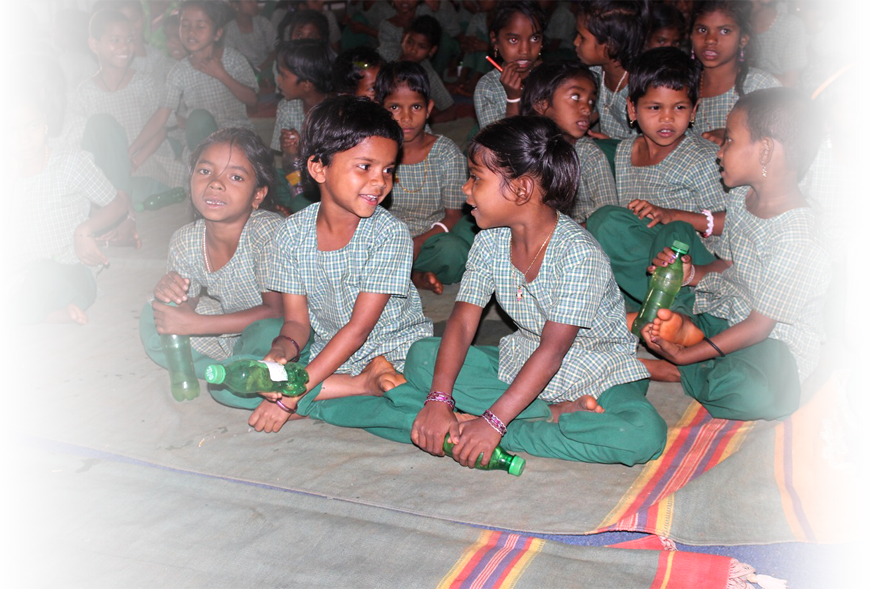
You can make a difference
To help a poor family lead a life of dignity and self-reliance.
Donate Now
